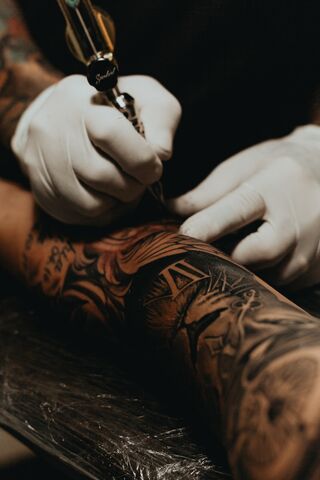
Discussion of self-injury, eating disorders, and somatization occur in the context of culture. Self-injurious behaviors that occur across cultures can provide insight into the role and meaning of such behaviors. A wide variety of people (and other primates) practice self-injury for many reasons. Primates have been found to practice self-injury in response to isolation and separation anxiety; this accounts for the wide use of SSRIs on dogs, cats, and birds, and other companion animals living in industrialized societies who are left alone for too long during the day.
Self-injury is also commonly practiced in association with magic, religion, and ritual. Whether these rituals are rooted in conscious choice and have a value to the individual and to the group, as contrasted with rituals that appear only to harm the person, remains an important determinant of their value.
The widespread use of tattoos and body piercing is a form of ritual self-injury enacted as part of a larger social ritual of becoming and belonging. We are continually asked to examine our own conditioning and beliefs about the continuum of these acts. Some prominent methods of socially condoned injury include self-flagellation in certain sects of Christianity, male circumcision among Jews and Muslims as well as by allopathic medical professionals, female genital mutilation, tattooing, scarification among Pacific Northwest tribes, and the American Indian Sun Dance among the Plains peoples.
Among aboriginal cultures in Australia, women cut themselves to express their grief. Some practices, like female and male circumcision, are condoned by many cultures and religions (Muslim sects and Jews respectively) but castigated by others. The Sun Dance has long been a religious and purification tradition of the Plains people, and for many, including the Lakota people, involves extended periods of body piercing. This most sacred of rituals occurs during the summer solstice and is a rite of passage signifying both birth and death and the power of the sun. It represents acts of generosity and the giving of that which one controls: one’s body. The ceremonies were outlawed until recently by the U.S. government and are currently undergoing a resurgence among the Plains people and their non-American Indian friends.

There is a long history of association between self-injury, hysteria, eating disorders (anorexia), and venesection (the cutting of veins). One ancient Greek treatment for hysteria was venesection. I wonder whether this served a similar purpose as self-injury does today. A strong relationship exists between self-injury in patients with eating disorders (Cash & Smolak, 2011); one study showed that 50% of females who chronically self-injure have a history of anorexia nervosa or bulimia (Favazza, 1992), which likely results from the anxiety-dissociative-endorphin continuum explored previously. In bulimia (most often associated with carbohydrate bingeing), tryptophan-serotonin would be another final pathway along the continuum in which relaxation is sought as the final outcome.
This piece is an excerpt from my book Rhythms of Recovery, which takes a comprehensive approach to trauma and self-injury.
References
Cash, T. F., & Smolak, L. (Eds.). (2011). Body image: A handbook of science, practice, and prevention (2nd ed.). New York: The Guilford Press.
Favazza, A. R. (1987). Bodies under siege: Self-mutilation in culture and psychiatry. Baltimore, MD: Johns Hopkins University Press.


